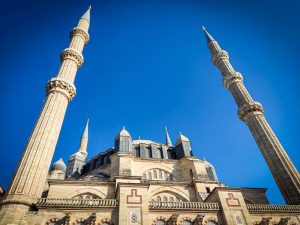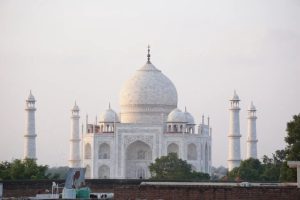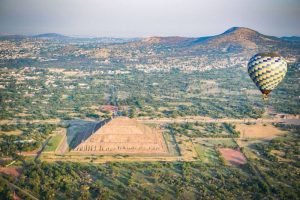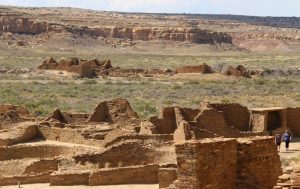Protective Town of San Miguel and the Sanctuary of Jesús Nazareno de Atotonilco
A colorful colonial-era town of Baroque architecture and its church complex with Mexican Baroque murals.

A colorful colonial-era town of Baroque architecture and its church complex with Mexican Baroque murals.

A small city where influences from three different world religions are visible in its architecture and art.

A collection of 16th-century architecture designed by Andrea Palladio in what is now known as Palladian style.

A magnificent 16th-century royal palace, particularly important for its artwork.

A 9th-century complex of hundreds of Hindu and Buddhist temples with stone carvings that are masterpieces of Siva art.

A monastery complex from the Bulgarian Renaissance, important to the spiritual and social life of Bulgaria.

A picturesque segment of the Danube Valley with beautiful scenery and charming towns and villages.

An exhibition building and surrounding gardens representing the importance of the 19th-century’s international exhibition movement.

A museum city of architecture of the Portuguese golden age.

Portugal’s oldest university, with centuries of architecture and ancient traditions.

A stunning example of Mughal architecture in the form of a fortress containing palaces, audience halls and mosques.

A charming 18th-19th-century British colonial fishing settlement with colorful wooden buildings.

A city with an interesting history of coexisting cultural communities, and with several historic monuments including a wonderfully intact Roman aqueduct.

An elegant ensemble of architecturally important buildings from the 17th and early 18th century.

A medieval caravan stop on the Silk Road that contains many examples of traditional Ottoman architecture.

Hundreds of ruins of temples and other structures of the vanished Vijayanagara kingdom.

Peter the Great’s planned city of stunning Baroque architecture.

A fortified port city with a long military history and a Renaissance urban plan.

A busy 19th-century Gothic Revival train station in Mumbai that blends Victorian and Indian influences.

A beautiful river valley landscape dotted with stunning castles and charming medieval towns.

A little-known archeological site in southern Albania with ruins from centuries of occupiers.

A mosque complex representing the height of Ottoman architectural achievement.

The most famous monument in India, a landmark of Mughal-era architecture and a symbol of eternal love.

Two colonial-era towns where cultural exchange has created unique townscapes and local culture.

An 18-century commercial port where foreign and Chinese influences mixed and intertwined, especially evident in the unique range of architecture.

A magnificent and remarkably well-preserved 18th-century palace and grounds.

Palaces and other structures that tell the story of the 70-year sojourn in France of the Catholic papacy in the 14th century.

A city of magnificent pyramids and temples left by an ancient civilization.

Five historical mission churches from the Spanish colonial period in Texas.

An ancient and audacious architectural marvel over 12,000 miles long.

Well-preserved prehistoric architecture that also demonstrates ancient Puebloans’ knowledge of astronomy.

Two early temple complexes that include the oldest wooden structures in the world.

A vibrant Spanish colonial city and an ancient pre-Columbian city.

A beautiful area around the Bay of Kotor with authentic, well-preserved architecture.

A colorful Spanish colonial town surrounded by fortifications.

Three elegant 18th-century city plazas.